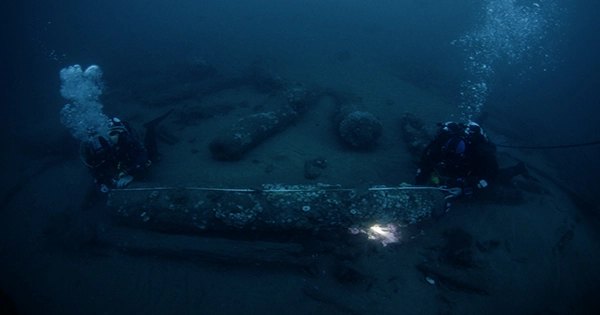The third-rate frigate HMS Gloucester went aground on a sandbank off the coast of Norfolk, UK, about 5.30 a.m. on May 6, 1682. It was transporting the future King of England, James Stuart, Duke of York, at the time, and it has been missing for nearly 340 years. It was to stay untouched by human hands until Julian and Lincoln Barnwell, together with buddy James little, discovered it half-buried in a seafloor following a four-year search. The English Historical Review has published the discovery. The Gloucester was commissioned in 1652 and built at Limehouse, London, before being launched in 1654.
The last journey of the Gloucester was to transport the Duke of York to Edinburgh, where he would meet up with his heavily pregnant wife and their family. All of this was done so that they may be at his brother’s – King Charles II’s – court in London for the birth of a legitimate male heir (he had a few illegitimate children). The Duke was a former Lord High Admiral, and it was reported that during the ships passage through the perilous Norfolk sandbanks, he got into a disagreement with the pilot over control of the ship.
Hundreds of staff and passengers died needlessly as a result of nautical etiquette prohibiting people from abandoning the ship before any royalty. According to witnesses, the Duke preferred his dogs and Catholic priests over the crew and courtiers. The Duke himself nearly escaped death because he waited until the last possible moment to leave the ship. Back in the early 2000s, the Barnwell brothers had a dream: they wanted to uncover a shipwreck. As a kid, Lincoln Barnwell was inspired by the raising of the wreck of Henry VIII’s favorite ship, the Mary Rose.
On their fourth diving season in 2007, the Barnwell brothers, their late father Michael, and a few friends discovered the wreck site. The hull was broken along the keel and the remains were buried in the sand. “We were starting to think we weren’t going to locate her since we’d done so much diving and just discovered sand.” “The first thing I saw on descend to the bottom were enormous cannons sitting on white sand; it was awe-inspiring and extremely beautiful,” Lincoln remarked.
“It seemed like an honor to be there right away since it was so thrilling.” At the time, we were the only individuals on the planet who knew where the wreck was. That was an once-in-a-lifetime experience that I’ll never forget. The next step was for us to identify the location as the Gloucester.” “We had no clue how vital the Gloucester was in history when we went to look for her.” The Duke of York was onboard, but that was all we knew. “We were certain it was the Gloucester, but there are other wreck sites with guns out there, so it needed to be validated,” Julian explained.
“The wreck still holds a wealth of information that will assist Norfolk and the rest of the country.” We hope that this find, as well as the stories that have been unearthed, will serve to educate and inspire future generations.” The discovery has been dubbed the most significant marine find since the Mary Rose. The ship was released today rather than earlier because it allowed them time to authenticate the identification and then defend the spot because it was a “at-risk” location. In 2012, the ship’s bell was discovered, allowing the UK’s Receiver of Wrecks and Ministry of Defence to identify the vessel.















